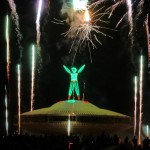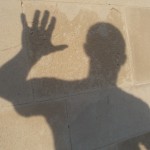 Erin Olivio is a clinical professor of medical psychology at Columbia University. In her work with addicts recovering from multiple addictions, Dr. Olivio finds that she must first find a way to help these people regain a sense of basic self worth. She begins this process by asking these newly sober patients to identify the character traits they most value in others. Typical answers to this question might be: “I value honesty, loyalty, authenticity, the capacity to love”. Then, Dr. Olivio asks her patients which qualities they most value in themselves. Now the answers are different. Most typically, they are things like “I have a good education, I can work hard”. Dr. Olivio was struck by the fact that people tend to judge themselves more readily by the things they have “done” (the externals), whereas they judge others by the things they “are” (the internals). As a starting point of conversation, Dr. Olivio points out this key difference to her patients. What she finds is that people, in general, have difficulty identifying their own positive “inner” character traits. When pressed, people are more apt to point out character flaws and/or the ways they have let people down.
Erin Olivio is a clinical professor of medical psychology at Columbia University. In her work with addicts recovering from multiple addictions, Dr. Olivio finds that she must first find a way to help these people regain a sense of basic self worth. She begins this process by asking these newly sober patients to identify the character traits they most value in others. Typical answers to this question might be: “I value honesty, loyalty, authenticity, the capacity to love”. Then, Dr. Olivio asks her patients which qualities they most value in themselves. Now the answers are different. Most typically, they are things like “I have a good education, I can work hard”. Dr. Olivio was struck by the fact that people tend to judge themselves more readily by the things they have “done” (the externals), whereas they judge others by the things they “are” (the internals). As a starting point of conversation, Dr. Olivio points out this key difference to her patients. What she finds is that people, in general, have difficulty identifying their own positive “inner” character traits. When pressed, people are more apt to point out character flaws and/or the ways they have let people down.
Buddhist psychologist Bruce Tift of Naropa University has also noticed this “disconnect” between the way we see ourselves and the way we see others. In the Buddhist way of thinking, this “self negativity” bias is a cause of great unnecessary suffering for us human beings. Dr. Tift believes that we are often “divided” against ourselves…believing, as we do, that we have a “good” self and a “bad” self and these “selves” are at war with one another. At a level that is either conscious or unconscious, this “inner war” becomes a huge source of anxiety, physical discomfort, and depression. Buddhist thought would argue that the “divided self” is an illusion, or as Dr. Tift terms it a “hallucination”. True inner peace and happiness can only occur if we feel “whole”.
So, where did the “divided self” originate, and more importantly, how can we be restored to “wholeness”. Dr. Tift sees the origins of the “divided self” in childhood. In the relatively long period of childhood each child needs to ensure physical and psychological survival by becoming the child the parent needs him to be. This is when the unacceptable parts of ourselves, (read “anger” and “aggression”) are pushed into the unconscious…but probably only temporarily. As we all know, eventually all of our parts will make themselves known..either by “anger” outbursts, or through their conversion into anxiety or physical illness. The important thing is that, as children, we become very aware of “bad behavior” and our capacity to engage in it. This is the beginning of the “divided” self, that can perpetuate into adulthood and go on forever, if not somehow addressed.
So, how can a “divided” self become whole again.? Bruce Tift believes the answer to this begins with looking deeply into our neurological system, where we have created a neurological pathway that identifies our own “negative” emotions as “dangerous” to the survival of the “self”. In childhood it may have been literally “dangerous” to allow the anger to surface, so, for our very survival our own emotions became a threat….we had to push them down (sometimes not very successfully) A conflict arose each time a feeling tried to assert itself and had to be somehow conquered. Our childhood strategy kept us in “good enough” relationship with caregivers when we were children, but it no longer serves us. In reality we need all of our emotions to survive in the real world…all the anger, all the aggression…we need to make them all available. In reality there is no “good” and “bad” per se, just the appropriate use of emotions at the appropriate time. But How can we achieve the appropriate integration?
First of all, its important I think to understand the concept of “neuro plasticity”. We know now that “neuro pathways” are not “hard wired”. We can change them. Here is where the idea of “vulnerability” comes in.
For the sake of argument, lets consider the emotion of anger. In order to really permanently change the neural pathway that identifies anger, as a “danger” to the “self”, it is necessary to identify the original source of the “trauma” that led us to believe we could not safely feel our anger. Imagine for example, that you were told that your anger was “killing” your mother. Your father is telling you this because your mother is particularly fragile. (this is just an example!) As a child, you might literally believe this…that you could “kill” your mother with your feelings. Imagine the depth of deep terror you would feel …the absolute vulnerability of this moment. ..your survival is at stake! Bruce Tift argues that if you can feel and remember deeply within your physical body the sheer terror of the moment of your worst vulnerability you can shift the feeling…change the pathway. Why? Because you will discover that, contrary to your deepest childhood fear, you can and will survive. You are literally changing a key, but probably unconscious “core” belief about your own survival. Your psyche has new “evidence”, if you will, and this will change the pathway. It reminds me of what Winston Churchill said about the onslaught of World War 2….”The only thing you have to fear is fear itself.”.. Put another way, it’s not the event itself but your “fear” of the event, that causes the problem. Churchill didn’t know it, but it seems to me he was defining the nature of anxiety. Go into that fear and ….feel it, know it, “embody” that vulnerability fully… Notice that you are truly OK. Now you will see that the fear and anxiety will simply “let go”. There is no reason for it to hold on to itself.



